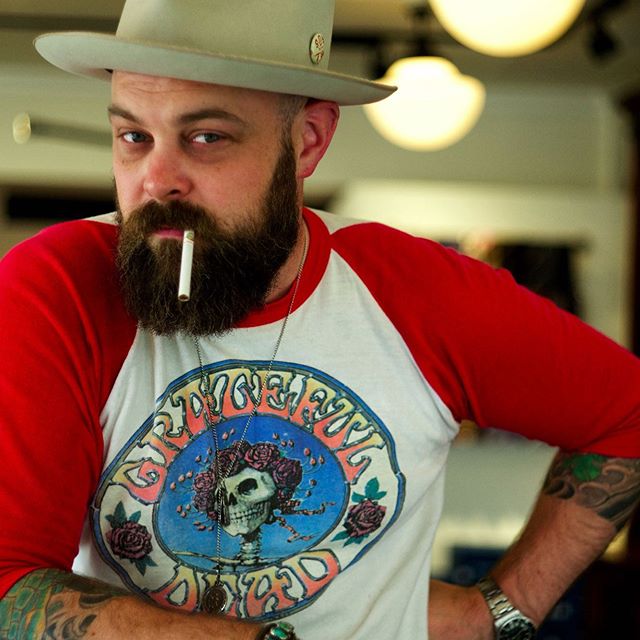
Ethan Newton of Brycelands in a vintage Grateful Dead print baseball style shirt.
When a trend crests, it’s often pretty clear who’s been riding the wave for years and who’s trying to hop in the lineup before the crash. I have a half-baked theory that when a menswear style becomes popular (maybe a type of hat, maybe a tailoring detail), it’s not cool to acquire and wear it now; it’s only cool to have had it already for 10 years. That’s another way of getting at whether someone’s clothing feels authentic to them, whether they wear it naturally. The complex topic of who can wear what authentically can lead to slippery slopes; for example, can you only wear prep gear if you’re Mayflower material? Should you only wear workwear if you earn your living doing the type of labor for which it was designed?
For the most part, those questions have been answered; you can wear whatever you want, although it helps to be aware of the signals your clothing decisions may send to other people.
A similar if less socially fraught question comes up regarding graphic tshirts: should you wear a printed tshirt from a band if you can’t name three of their albums? Or a club if you’re not a member? I’m not as hung up on these questions as I used to be. Maybe I’ve seen too many “vintage look” tshirts to care any longer; such shirts have been around at least since the late 90s/2000s, when Teenage Millionaire and Urban Outfitters were pushing faux vintage “Jesus Is My Homeboy” tshirts. (These shirts themselves are approaching “vintage” status. There’s not a governing body determining what’s vintage and what’s not, but a decent rule of thumb is 20+ years old = vintage.)
I walk a line these days: I would rather have a connection to any graphic I’m wearing, but if I find a shirt I really like, whether it’s the make or the art, I can get over it. I probably wouldn’t wear a band shirt from a band I don’t listen to, but I don’t judge other people harshly for doing so.
So other than a graphic you like and (potentially) feel a connection to, what to look for in a vintage tshirt? A lot depends on what fit and feel you like.
- There are pre-1960s printed shirts, often athletic or military related, but graphic tshirts really boomed in the 60s and have been going strong since — Disney was an early licenser of printed tshirts; the Mickey Mouse shirt is a classic design. Pre-1970s, many shirts were 100% cotton. It’s not common to find these shirts in wearable condition today, but they exist. They often have a dry feel, and may be delicate. In this era, tshirts were growing out of their status as underwear to everyday wear, and hence fit close to the body. A lot of them fit quite small by modern tshirt standards.
- In the 1970s and 1980s, you get more poly/cotton blends, which last a long time but after years of wash and wear, can be quite thin, even “burnt out” — that’s the inspiration for tri-blend (poly, cotton, rayon) and paper-thin burnout type tshirts that were an American Apparel staple in the 2000s. (A good source of tshirt tags and era identification is defunkd — most 70s and 80s graphic tees printed on a handful of blank brands like Screen Stars (Fruit of the Loom) or Jerzees (Russell Athletic).) These shirts still run small, relatively; they may stretch, but it’s not uncommon to find tagged XLs that measure 20 or 21 inches across the chest (modern XLs can be 23 or 24 inches across).
- The 1990s saw a lot more of the dry-feel, cotton shirts like Fruit of the Loom’s tshirts tagged “Heavy.” You still see a good number of these in thrift shops. Their dimensions will be more wearable in a modern context, but it’s still good to know how you want a shirt to fit, regardless of tagged size, and buy accordingly.
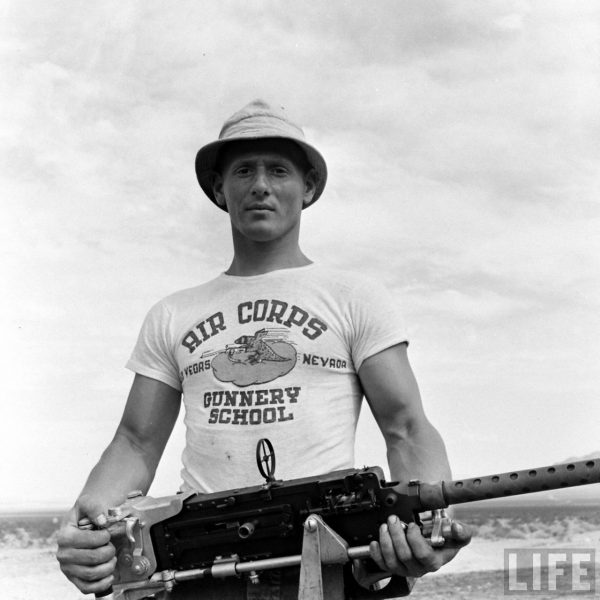
An early example of a printed tshirt–Life Magazine, 1942.
Sources for Vintage Printed Shirts
Shop Better Vintage Shops Online
The good news is, more and more vintage shops have an online presence, whether that’s true ecommerce or social media. The bad news is that the same market demand that makes ecommerce possible also drives prices up. You’re paying for the dealer’s time spent hunting and photographing/listing, and sometimes competing with demand from collectors, sometimes driven up by celebrity or designer association. Some of my favorite online sources to browse include Wooden Sleepers (really amazing older shirts), DC’s Joint Custody (especially good for rap and hardcore band shirts), Beacon’s Closet (not the best selection but low-ish prices), and Vintage Sponsor (mostly 90s). Some vintage sources on Instagram: Matt Smith (also sells at markets around Atlanta), Cee Blues (a Richmond shop), and Deep Cover (mostly 90s), and Procell in NY.
Shop Better Vintage Shops in Person
Many vintage shops will have racks of tshirts — if there’s no collector demand, it may not be worth their time to put them online. Flea markets can also be good sources, whether it’s Pasadena’s famous Rose Bowl Flea or your local weekly or monthly market.
Get to Know a Vintage Dealer
In my experience, while vintage dealers can be a little guarded, especially about sources, but they love to talk vintage. If you shop at flea markets and become friendly with dealers, they may be able to help you find specific shirts you’re looking for, either while picking or from other dealers.
Thrift Heavily or Ebay
Thrift and secondhand shop tshirt racks are overflowing with recent used, rather than vintage, tshirts. Even if older, cooler stuff makes it to thrift, eagle-eyed pickers often get to it first. That doesn’t mean gems don’t hide among the detritus, though. Are you likely to find a 70s Stones tee shirt among the family reunion tees? No. But there’s always a chance.
You can also browse eBay, Depop, Poshmark, and Etsy; these markets are crowded with new “vintage” shirts, but filters and time can reveal some well-priced finds.
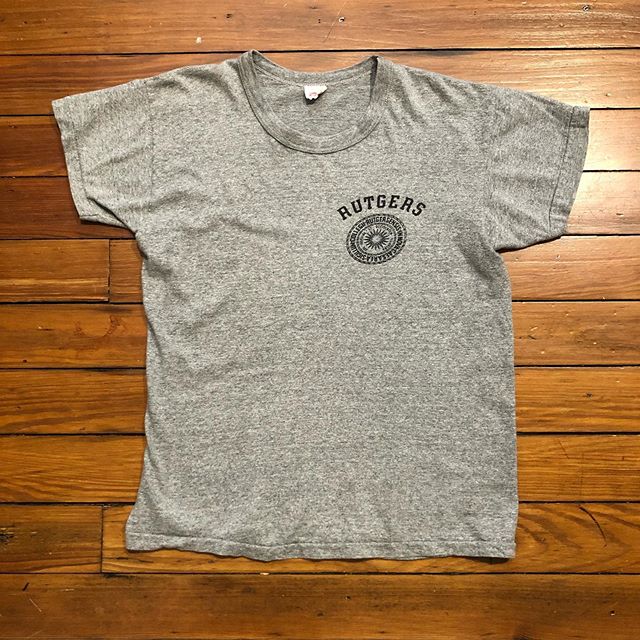
A vintage Rutgers shirt (est 1960s) from Cee Blues.
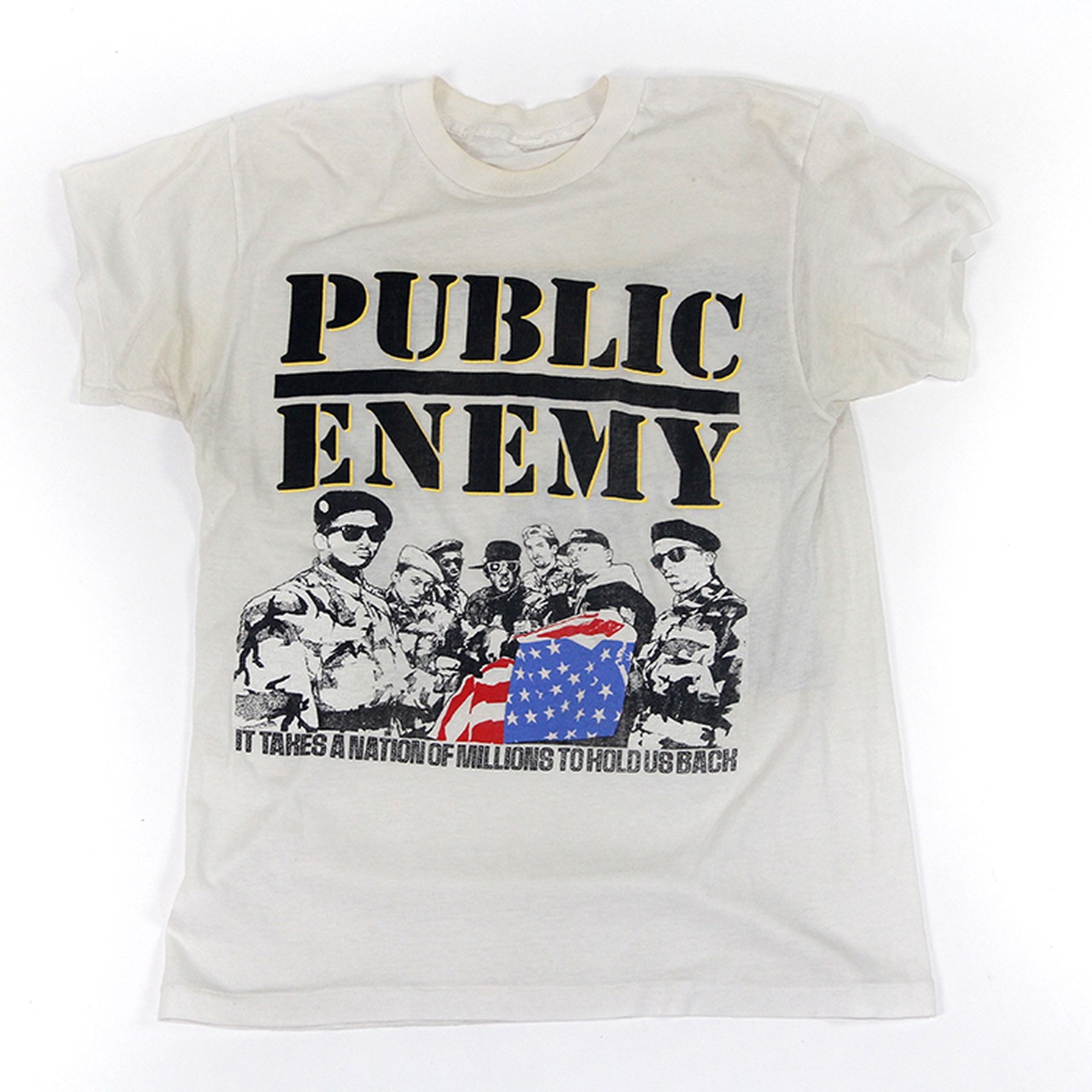
A vintage PE shirt at Joint Custody.
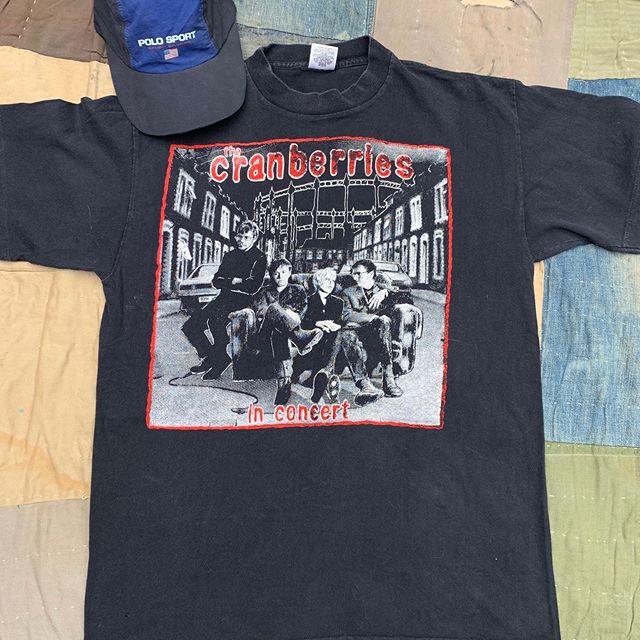
90s Cranberries shirt from Matt Smith/Rebels and Rogues.
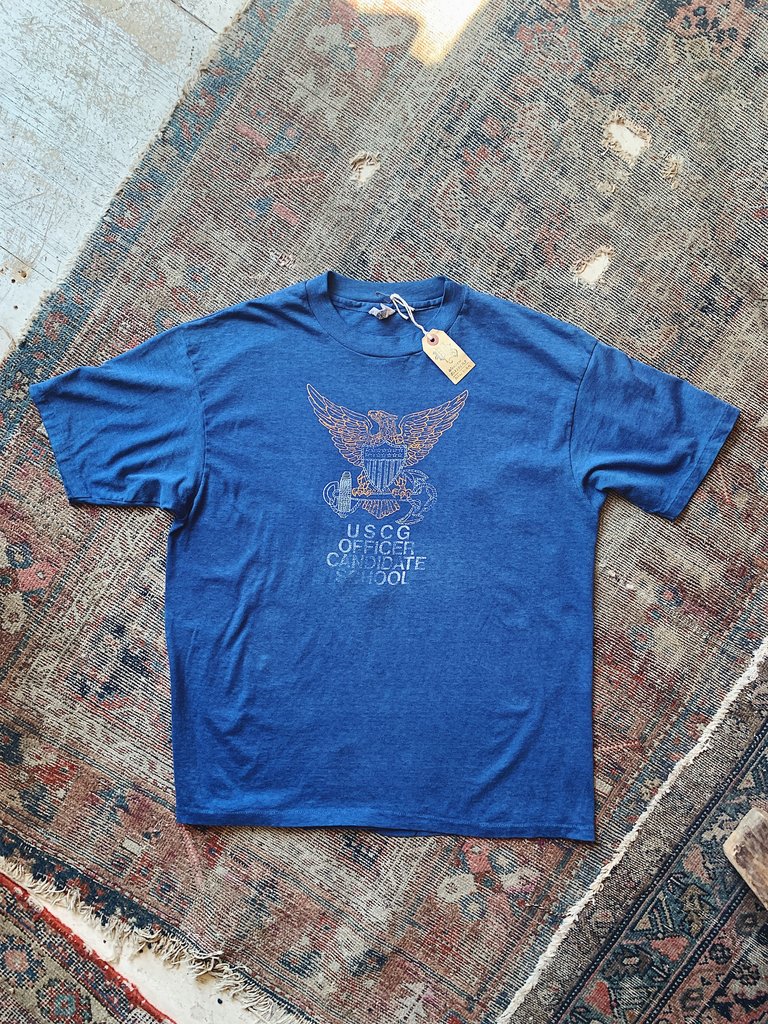
Vintage Coast Guard shirt at Wooden Sleepers.
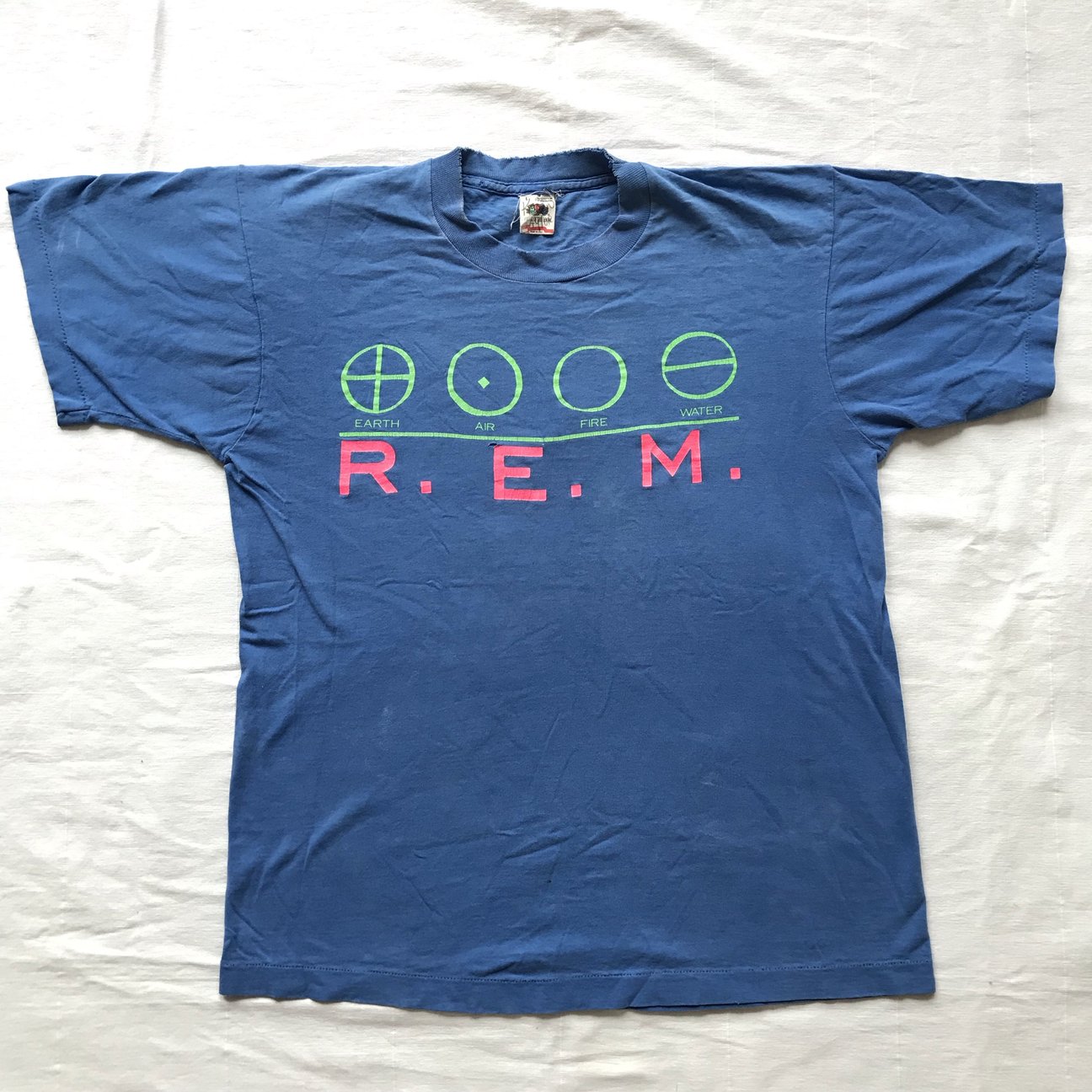
An REM shirt from Vintage Sponsor.







